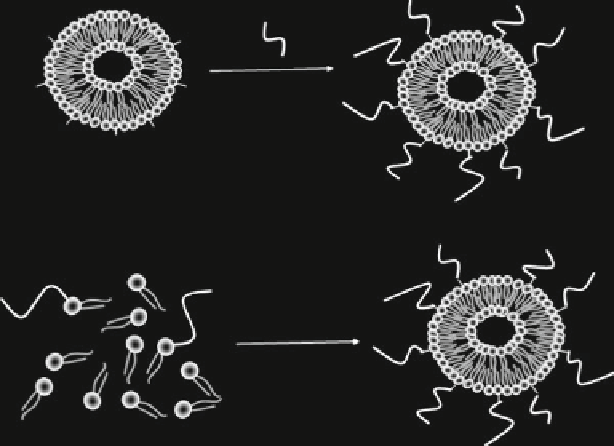Biomedical Engineering Reference
In-Depth Information
a
X
Activated PEG
X
X
X
X
X
X
X
X
b
PEG lipid
Conjugate
Liposome
formation
Fig. 11 Methods for the construction of PEGylated liposomes. (a) Liposomes possessing reactive
groups, such as amino and carboxyl groups, can be prepared by incorporating lipophilic
components containing these functional groups into a bilayer membrane. Functionalized
liposomes can be PEGylated by reaction with activated PEG derivatives. (b) Preparation of
PEGylated liposomes using PEG derivatives possessing lipid moieties
surface. This functionalized liposome can be used for the preparation of PEGylated
liposomes (Fig.
11
).
Another method for the preparation of PEGylated liposomes utilizes PEG, which
possesses a lipid moiety at one end, in conjunction with low molecular weight lipid
molecules during the preparation of the liposome (Fig.
11
). This method was
originally reported by Kilbanov et al. in 1990 [
67
]. They conjugated phosphatidyl-
ethanolamine with PEG possessing activated carboxyl groups. For liposome prepa-
ration, 7.4 mol% of the PEG lipid was incubated. At this ratio of components, no
increase in the leakage of the entrapped compound was observed. This methodol-
ogy was adopted for the preparation of Doxil.
4.4.2 Micelles
Polymeric micelles containing anticancer drugs were originally developed by
Kataoka and Kabanov, independently [
68
,
69
]. Anticancer drugs are incorporated
into micelles via physical entrapment or chemical conjugation. A number of
micelles are being assessed in clinical trials [
70
], and progress on the polymer
micelle system is emerging. Nishiyama et al. reported the development of a

